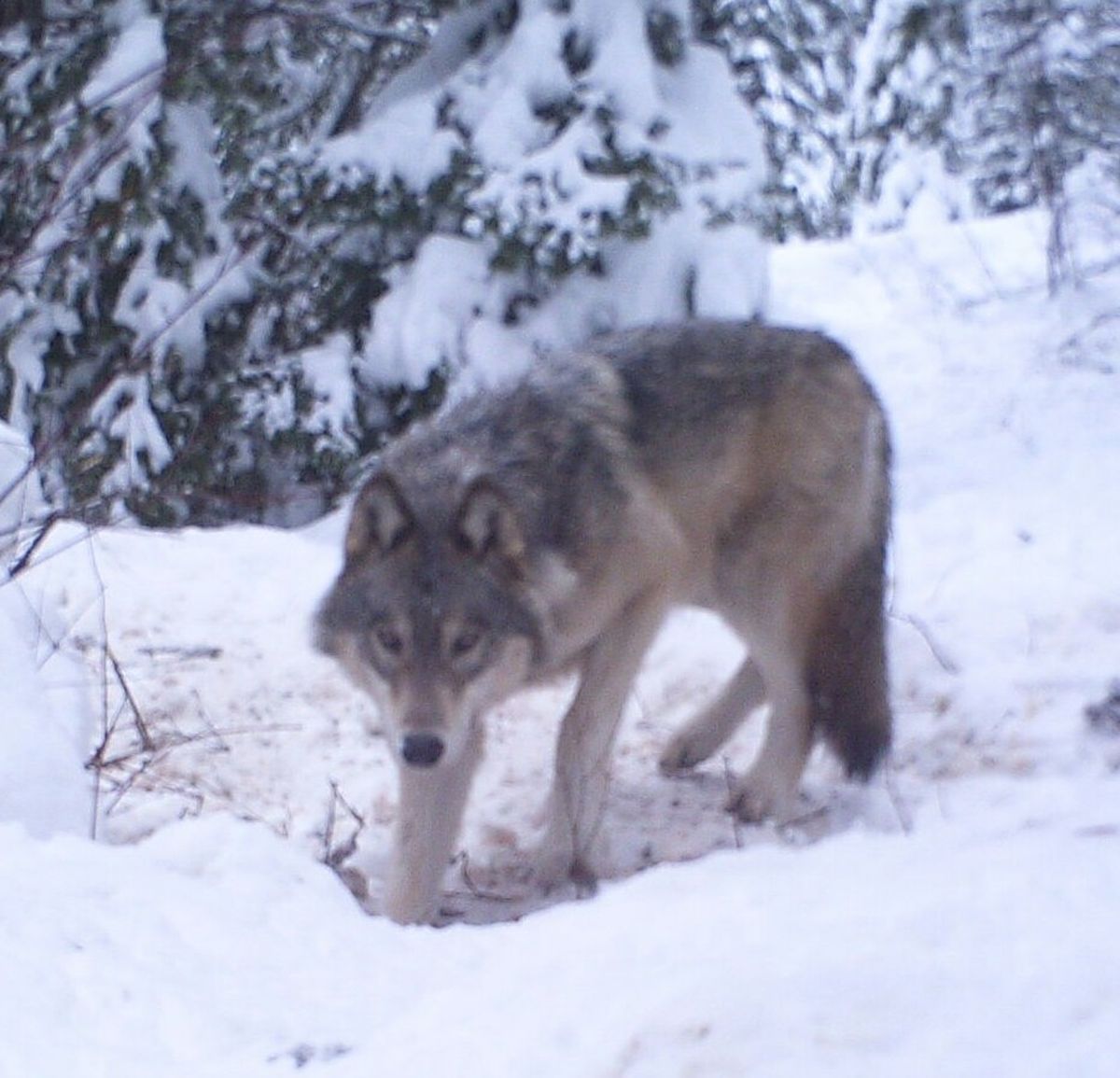Most of state’s wolf packs named geographically

Most of Washington’s wolf packs were named for geography in their range by the wolf researchers who documented them by ground or aerial monitoring after trapping and radio-collaring one or more members:
• Lookout – Washington’s first fully documented breeding wolf pack since the 1930s was confirmed in 2008 when the breeding male and female were captured and radio-collared southwest of Twisp near Lookout Mountain.
• Diamond – Confirmed in 2009 in Pend Oreille County near Diamond Peak. DNA analysis linked the male to the naturally re-colonizing southern Alberta-northwestern Montana wolf population.
• Wedge – Entered the spotlight in 2007 with the first confirmed wolf attack on cattle in Washington since the 1930s. Documented in 2012 in northern Stevens County and named for its range in the “wedge” of rugged forest on the U.S.-Canada Border between the Kettle and Columbia rivers.
(In September 2012, all eight known members of the pack were shot from a helicopter after attacking more than 15 cattle. At least two wolves reclaimed the area as a pack in 2013.)
• Teanaway – Photographed in Kittitas County by cameras from federal agencies and volunteers from Conservation Northwest; named for its range along Teanaway River, ridge and butte.
• Salmo – Confirmed northeast of Metaline Falls near Salmo Mountain, where it ranges into Canada.
• Smackout – Known for producing mostly black wolves, confirmed after being reported by a livestock producer working his grazing allotment near Smackout Meadows northwest of Ione.
• Huckleberry – Following a tip about wolf tracks at a moose kill, Spokane Tribe biologists collected scat for DNA analysis that identified at least four individual wolves in Stevens County near their reservation. Five wolf pups were video-recorded in 2012. The pack was named by the tribe for nearby Huckleberry Mountain.
(This pack, which produced at least four pups this spring, made headlines in August as it began killing sheep.
The pack’s breeding female was killed by a federal shooter and the sheep were removed from a grazing allotment.)
• Strawberry – Confirmed as Washington’s ninth wolf pack in September 2012 after biologists working with the Colville Tribe captured three different wolves on the reservation and fitted them with GPS collars.
• Dirty Shirt – Confirmed in 2013 with field work by WDFW police Severin Erickson.
“I was patrolling for illegal motor vehicle activity in a road-closure area on Stimson land when I found scat that appeared to be from wolves,” he said.
State wolf capture coordinator Scott Becker was able to confirm the presence of more than one wolf shortly after.
Erickson named the pack after a nearby peak.
“I could have named it for Calispell Peak and everybody would know where I’m talking about,” he said, noting the prominent mountain 9 miles north of 49 Degrees North ski area. “Dirty Shirt is southeast of Calispell and a little harder to find unless you know the area. Besides, it sounds better.”
• Profanity – Confirmed in September after wolves attacked cattle on a national forest grazing allotment in Ferry County near Profanity Peak.
• Ruby Creek – Confirmed in 2013 around Ruby Creek near Ione with two females. Defunct in 2014 after one was killed by a motor vehicle; the other was destined for trapping this week and captivity at a wildlife park because of losing fear of humans.